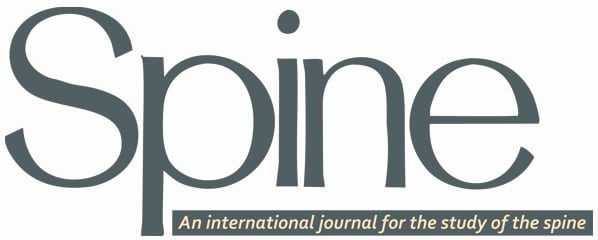The Association between Lumbar Disc Degeneration and Low Back Pain: The Influence of Age, Gender, and Individual Radiographic Features
Evelien I. T. de Schepper, MD, Jurgen Damen, MD, Joyce B. J. van Meurs, PhD, Abida Z. Ginai, MD, Maria Popham, MSc, Albert Hofman, PhD, Bart W. Koes, PhD, Sita M. Bierma-Zeinstra, PhDDisclosures
Spine. 2010;35(5):531-536.
Abstract
Study Design. Cross-sectional open population based study (nested in a prospective cohort study).
Objective. To explore the association of the different individual radiographic features, including osteophytes and disc space narrowing, with self-reported low back pain (LBP). Different definitions of lumbar disc degeneration with self-reported LBP and disability were considered in a large open population sample. Furthermore, in order to disentangle the discrepancies in reported strength of the associations, we characterized the frequency of the different individual radiographic features of lumbar disc degeneration and definitions of lumbar disc degeneration, as well as their association with LBP status, by age, gender, and vertebral level.
Summary of Background Data. Currently within the literature, there have been no studies that have explored different definitions of lumbar disc degeneration and their association with LBP within one study sample.
Methods. The intervertebral disc spaces (L1/2 to L5–S1) were evaluated for the presence and severity of anterior osteophytes and disc space narrowing using a semiquantitative score (grade 0–3). Logistic regression was used to determine the association between these individual radiographic features of lumbar disc degeneration and different definitions of lumbar disc degeneration for LBP.
Results. Lumbar radiographs were scored for 1204 men, and 1615 women. Osteophytes were the most frequent radiographic feature observed, with men having the greatest frequency. Disc space narrowing was more frequent in women than men. Both radiographic features increased in frequency with age.
Disc space narrowing appeared more strongly associated with LBP than osteophytes, especially in men (odds ratio [OR] = 1.9; 95% confidence interval [CI]: 1.4–2.8). Disc space narrowing at 2 or more levels appeared more strongly associated with LBP than disc space narrowing at only 1 level (OR = 2.4; 95% CI: 1.6–3.4). After excluding level L5–S1, the strength of almost all associations increased.
Conclusion. We are the first to report different possible lumbar disc degeneration definitions and their associations with LBP. Disc space narrowing at 2 or more levels appeared more strongly associated with LBP than other radiographic features, especially after excluding level L5–S1.
